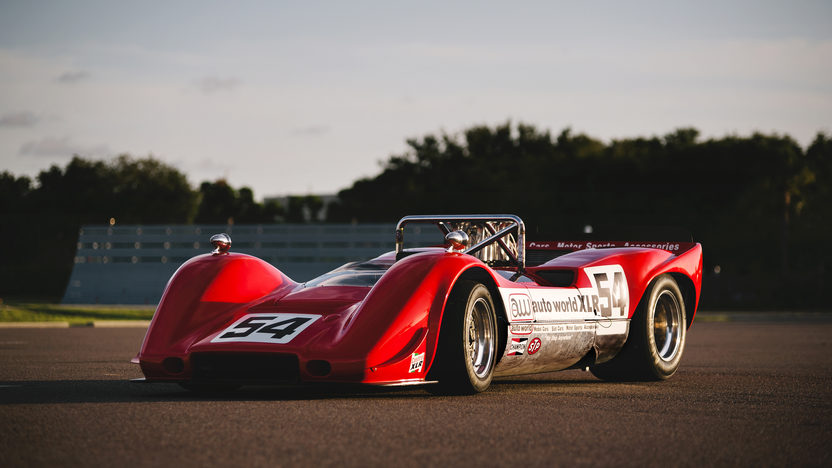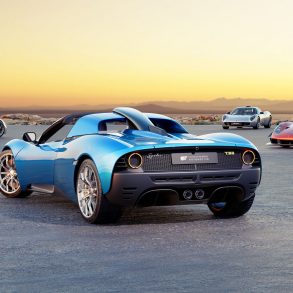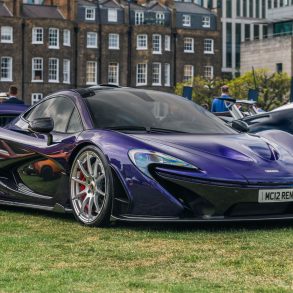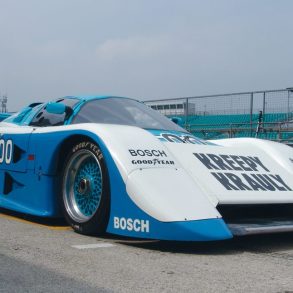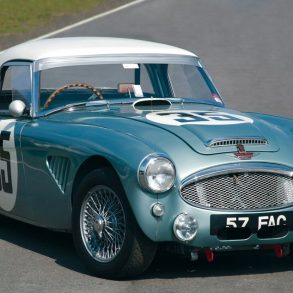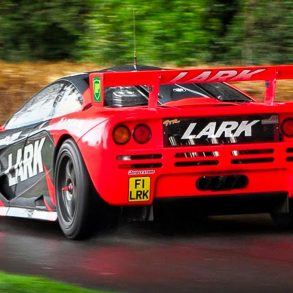McLaren M6
The first car, M6A-1, was completed and ready for testing at Goodwood on June 19, 1967, more that three months prior to the opening race in the Can-Am series. The car covered over 2000 miles of testing before its debut at Elkhart Lake. Team McLaren won its first Can-Am Series with these cars designed by Bruce McLaren, Robin Herd, Gordon Coppuck, Don Beresford and Tyler Alexander. It was as simple as possible, consisting of single curvatures and square section tubing wherever they could be used. The M6A was a works car and only three were built.
Chassis: Full monocoque formed from aluminum alloy paneling bonded and riveted to steel bulkheads and carrying two 25-gallon fuel cells in the side pontoons Suspension: Unequal length upper and lower wishbones, anti-roll bar and coil spring/shock units in front. Upper and lower wishbones with twin radius arms anti-roll bar and coil spring/shock at rear. McLaren cast magnesium wheels, 15 x 8 ½ inch front and 15 x 13 ¼ rear, 2 inches wider than last years car. Fuel was carried

Dimensions: Wheelbase 93.5 inches, front track 52 inches, rear track 52 inches. width 68 inches, height to the top of the windscreen was 31 inches, weight less fuel 1300 pounds distributed 40 percent front/60 percent rear.
Power came from a six liter Chevrolet V8 with Lucas fuel injection producing 525 horsepower through a 5-speed Hewland LG transaxle. The engines were prepared by Al Bartz Engines in Van Nuys, California. Bartz, formerly of Traco Engineering built the engines as part of a special arrangement with McLaren.

The new car’s debut came at Road America and by the end of qualifying the McLaren M6As occupied the first two positions on the grid with McLaren on pole and Denny Hulme, occupying 2nd. McLaren’s time smashed the course record by 10 seconds!. The 3rd place starting car would be a Lola T70 driven by Dan Gurney who could only just manage to stay within 2 secs of the two orange cars. Hulme would go on to win the race as well as the next two, while Bruce McLaren would win at Laguna Seca and Riverside clinching the first Can-Am Championship for McLaren. Only at the last race in Las Vegas would another car than a McLaren take the checkered flag. I would be the beginning of the Bruce & Denny Show.
The McLaren M6B was the production version of the championship-winning M6A and differed very little from the original. It was built by Trojan and was offered in a rolling chassis complete waiting only for a motor to be fitted. It was in tremendous demand and a total of fifteen (plus three coupes) were built and their specifications were virtually identical to those of the M6A.


